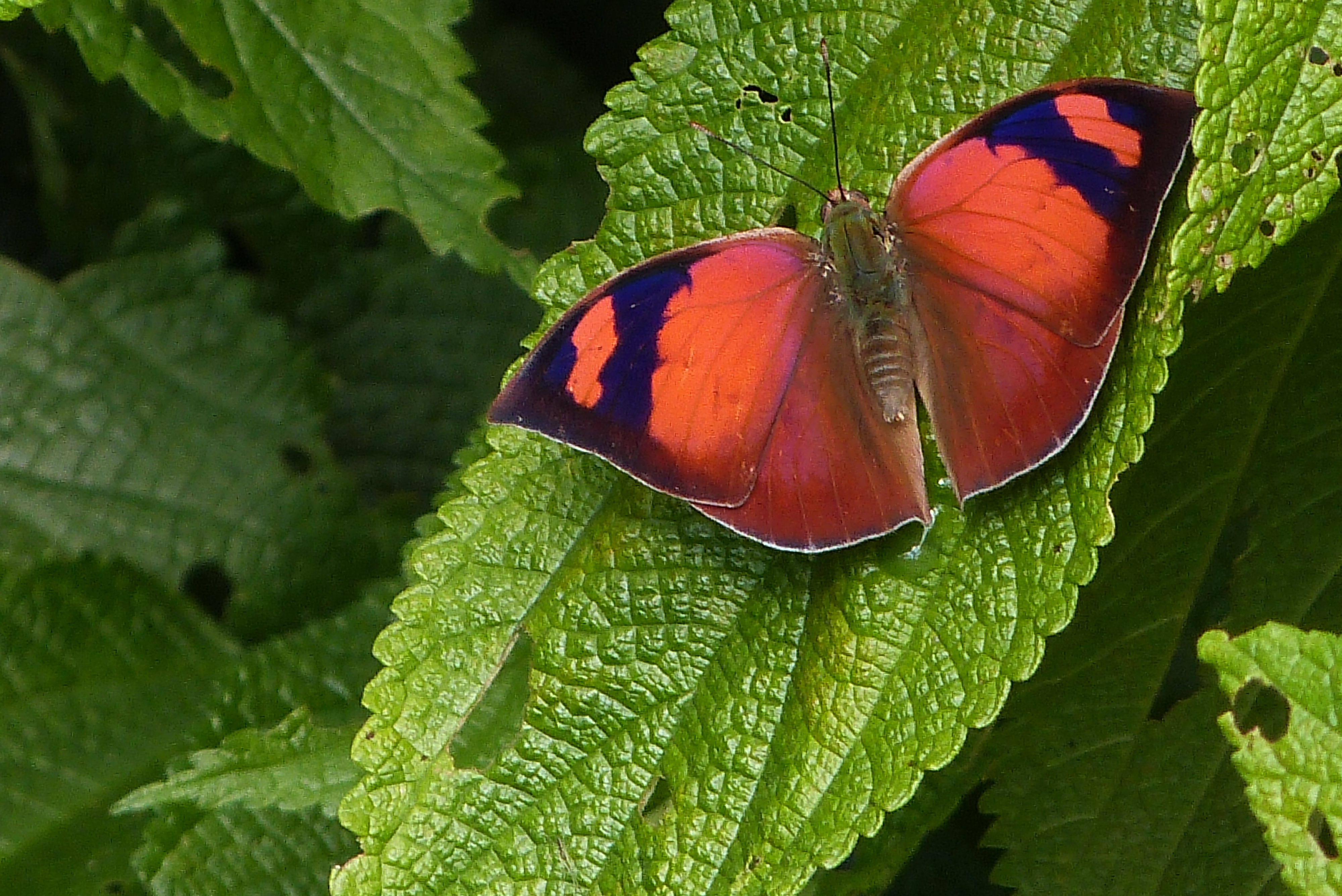Charaxinae on:
[Wikipedia]
[Google]
[Amazon]
__NOTOC__
 The Charaxinae, the leafwings, are a nymphalid
The Charaxinae, the leafwings, are a nymphalid

Checklist of North American Nymphalidae
{{Taxonbar, from=Q860124 - Taxa named by William Doherty Butterfly subfamilies
 The Charaxinae, the leafwings, are a nymphalid
The Charaxinae, the leafwings, are a nymphalid subfamily
In biological classification, a subfamily (Latin: ', plural ') is an auxiliary (intermediate) taxonomic rank, next below family but more inclusive than genus
Genus ( plural genera ) is a taxonomic rank used in the biological classifica ...
of butterflies
Butterflies are insects in the macrolepidopteran clade Rhopalocera from the order Lepidoptera, which also includes moths. Adult butterflies have large, often brightly coloured wings, and conspicuous, fluttering flight. The group comprises ...
that includes about 400 species
In biology, a species is the basic unit of classification and a taxonomic rank of an organism, as well as a unit of biodiversity. A species is often defined as the largest group of organisms in which any two individuals of the appropriat ...
, inhabiting mainly the tropics, although some species extend into temperate regions in North America, Europe, China
China, officially the People's Republic of China (PRC), is a country in East Asia. It is the world's List of countries and dependencies by population, most populous country, with a Population of China, population exceeding 1.4 billion, slig ...
, and southern Australia
Australia, officially the Commonwealth of Australia, is a sovereign country comprising the mainland of the Australian continent, the island of Tasmania, and numerous smaller islands. With an area of , Australia is the largest country by ...
. Significant variations exist between the species. For example, some are medium sized and bright orange above, but mottled gray or brown below. This underwing coloration helps them resemble a dead leaf when they are at rest, as they keep their wings closed. With relatively few exceptions, the hindwings of the members of this subfamily have jagged edges.
Adults are very robust and fast flyers, and many are strongly attracted to drink liquids from carrion
Carrion () is the decaying flesh of dead animals, including human flesh.
Overview
Carrion is an important food source for large carnivores and omnivores in most ecosystems. Examples of carrion-eaters (or scavengers) include crows, vultures ...
, dung, and rotten fruits, rather than nectar
Nectar is a sugar-rich liquid produced by plants in glands called nectaries or nectarines, either within the flowers with which it attracts pollinating animals, or by extrafloral nectaries, which provide a nutrient source to animal mutualist ...
from flowers.
Males establish territories and perch on tree trunks, branches, and even the ground. The eggs are smooth and round and generally with a somewhat concave apex.
Some genera in this subfamily (notably ''Charaxes'', ''Agrias'', and ''Prepona'') are very popular among butterfly collectors.
Genera
Tribe Charaxini Guenée, 1865 * '' Polyura'' – nawabs * '' Charaxes'' – rajahs and pashas, emperors Tribe Euxanthini Rydon, 1971 Rydon, A.H.B. 1971. The systematics of the Charaxidae (Lepidoptera: Nymphaloidea). ''Entomologists Record'' 83: 219-233, 283-287, 310-316, 336-341, 384-388, 6 figs., 4 plates. * '' Euxanthe'' Tribe Pallini Rydon, 1971 * '' Palla'' Tribe Prothoini Roepke, 1938 * '' Prothoe'' * '' Agatasa'' – glorious begum Tribe Preponini Rydon, 1971 * '' Agrias'' * '' Prepona'' * '' Archaeoprepona'' * '' Anaeomorpha'' (sometimes in Anaeini) Tribe Anaeini (also see tribe article) * '' Anaea'' * '' Coenophlebia'' * ''Consul
Consul (abbrev. ''cos.''; Latin plural ''consules'') was the title of one of the two chief magistrates of the Roman Republic, and subsequently also an important title under the Roman Empire. The title was used in other European city-states throu ...
''
* '' Fountainea''
* '' Hypna''
* '' Memphis'' (formerly included in ''Anaea'')
* '' Polygrapha''
* '' Siderone''
* '' Zaretis''

References
External links
Checklist of North American Nymphalidae
{{Taxonbar, from=Q860124 - Taxa named by William Doherty Butterfly subfamilies